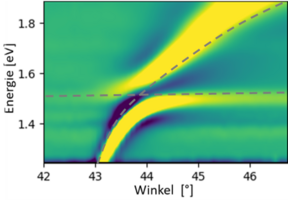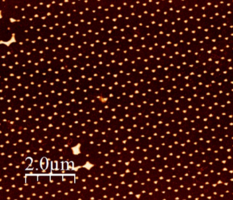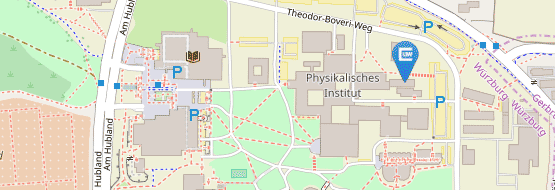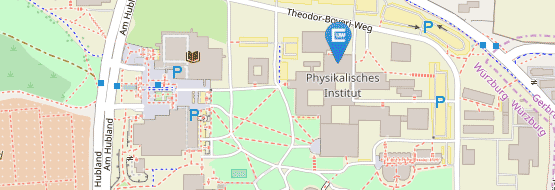Metal-Organic Hybrid Structures
Metal-organic hybrid structures offer unique possibilities for application in already existing devices, such as photo-detectors or organic light-emitting diodes (OLEDs), as well as in novel photonic architectures. Furthermore, the coupling between the electronic excitations of a molecular thin film and the plasmonic resonance of a metallic thin film in close proximity can tune the optical properties of the organic layer and even generate new plasmon-polaritonic states, also called plexcitons (Figure 1). Their coupling strength relates to the inner product of the transition dipole moment of the excitonic state and the electrical field of the surface plasmon [1]. Consequently, even a spatially dependent coupling can occur, in case, the transition dipole moments are aligned anisotropically and can constitute the platform for novel photonic devices with topological characteristics.
Making use of localized plasmons, we demonstrated a strong enhancement in light out-coupling of an organic thin film deposited on top of a hexagonal silver nanopattern [2]. For this purpose, we utilized the Shadow Nanosphere Lithography (SNL), a versatile and low-cost-large-area technique to manufacture long ranged ordered nano-arrays of metals, organics, or hybrid-compounds (Figure 2). Varying the materials constituting the nano-array, their angle of deposition during growth or post-thermally treating the latter, the resulting optical characteristics, including the energetic positions of the plasmon-polaritonic states or their coupling, can be tuned over the visible wavelength range. This allows not only for a comprehensive study of the underlying interaction mechanisms but also for an implementation in various device structures to improve their performance and multi-functionality.
If you are interested in a specific topic of our research or are looking for a bachelor or master thesis, feel free to contact Prof. Jens Pflaum.
[1] The Role of Molecular Arrangement on the Strongly Coupled Exciton–Plasmon Polariton Dispersion in Metal–Organic Hybrid Structures
Rödel M et al. (2022). J. Phys. Chem. C [DOI]
[2] Hybrid metal-organic nanocavity arrays for efficient light out-coupling
Kolb V, and Pflaum J (2017). Opt. Express [DOI]





